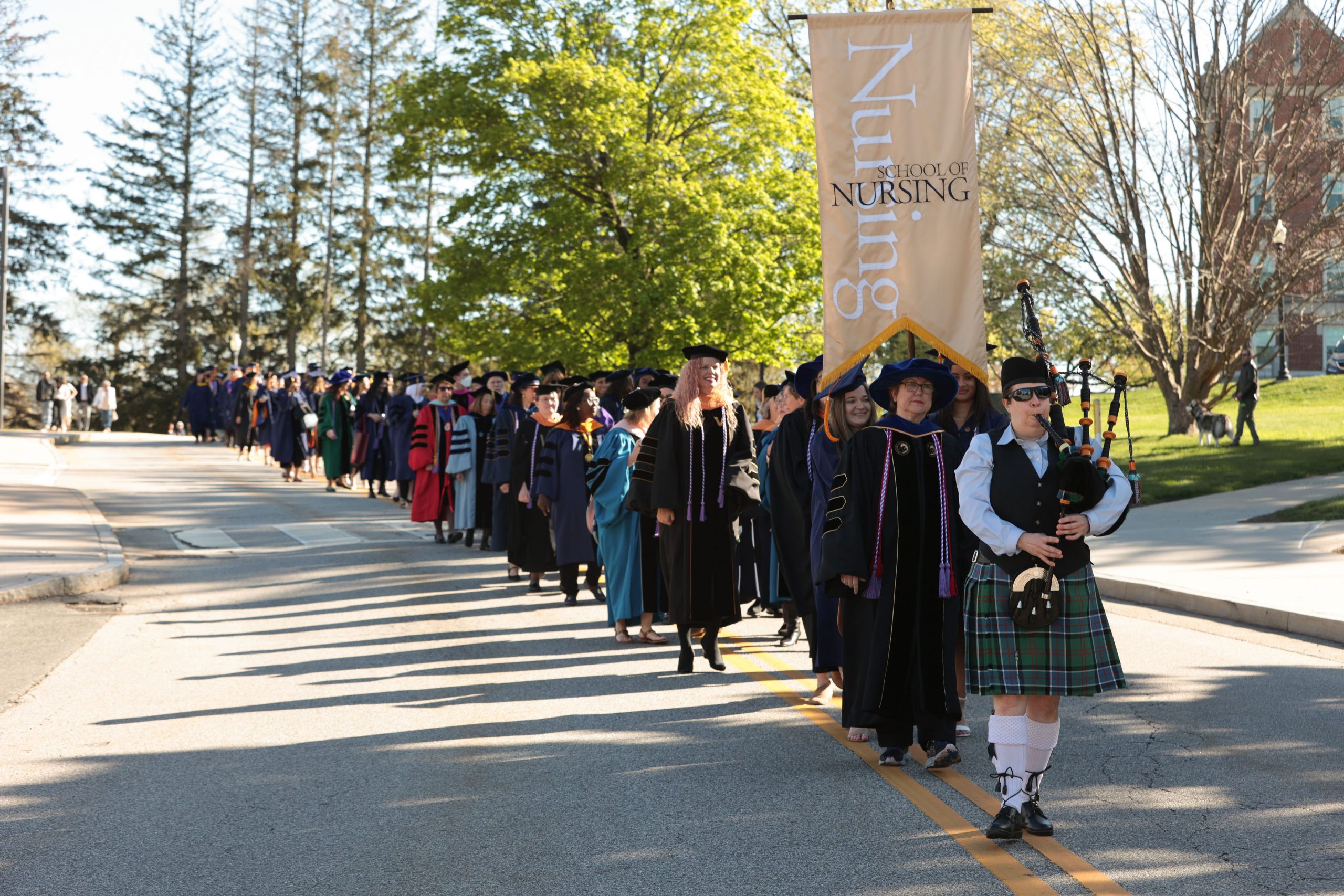
Ever looked wistfully at those photo gray sunglasses and wished they would turn some other fun color? Like, say, yellow? Or UConn blue?
Well the technology is now here, thanks to Greg Sotzing, professor of chemistry in the College of Liberal Arts and Sciences and a member of UConn’s Polymer Program.
Not only have he and his colleagues perfected a method for creating quick-changing, variable colors in films and displays, such as sunglasses, they’ve made them less expensive and less wasteful to manufacture than any previous method. And aside from creating vanity glasses, the technology is in high demand from the U.S. military.
“This is the next big thing for color-changing lenses,” Sotzing says.
The typical material behind a color-changing lens is what’s called a photochromic film, or a sheet of polymers that change color when light hits them. Sotzing’s new technology does things slightly differently – his electrochromic lenses are controlled by an electric current passing through them when triggered by a stimulus, such as light.
“They’re like double pane windows with a gap between them,” explains Sotzing. He and his colleagues squirt a mixture of polymers – or as he calls it, “goop” – in between the layers, creating the lens as it hardens. The mixture of polymers used in this lens, he says, creates less waste and is less expensive to produce than previous mixtures.
“The lifetime of sunglasses is usually very short,” says Sotzing, pointing out that people often misplace them. So by making the manufacturing less expensive, he says, commercial retailers will be able to produce more of them.
 Another benefit of this material is that it can change colors as quickly as electricity passes through it – which is virtually instantaneously. This process could be very useful for the military, Sotzing says. For example, if a person emerges from a dark passageway and into the bright sunlight of the desert, a lens that would alter its color instantly to complement the surroundings could mean life or death for some soldiers.
Another benefit of this material is that it can change colors as quickly as electricity passes through it – which is virtually instantaneously. This process could be very useful for the military, Sotzing says. For example, if a person emerges from a dark passageway and into the bright sunlight of the desert, a lens that would alter its color instantly to complement the surroundings could mean life or death for some soldiers.
“Right now, soldiers have to physically change the lenses in their goggles,” Sotzing says. “This will eliminate that need.”
Sotzing will begin a one-year sabbatical at the Air Force Academy in August, where he hopes to develop some of these ideas.
In November 2010, partially based on work supported by the Center for Science and Technology Commercialization’s Prototype Fund, the UConn R&D Corp. started a company, called Alphachromics Inc., with Sotzing and colleague Michael Invernale, now a post-doctoral researcher at MIT, as founders. The University has a patent pending for this new technology, which is currently under option to the company. Alphachromics is also testing applications of these polymer systems for energy-saving windows and custom fabrics.
Sotzing and Alphachromics are currently in talks with sunglass manufacturers, and Sotzing says the world of Hollywood could have a market for this technology. He describes applications he calls “freaky,” including colors that move back and forth across the glasses, evoking styles like those sported by Lady Gaga.
But he stresses that the best thing about this technology is the creation of business in Connecticut. Although the glasses may not be made here, because the technology will be licensed to out-of-state manufacturers, he hopes Alphachromics will continue to expand in Connecticut.
“We don’t make the sunglasses,” he says. “We make the formulation of what goes inside them.”
The findings were published July 7 in the Journal of Materials Chemistry. Sotzing’s collaborators on the paper are Invernale and Ph.D. students Yujie Ding, Donna Mamangun, and Amrita Kumar.


